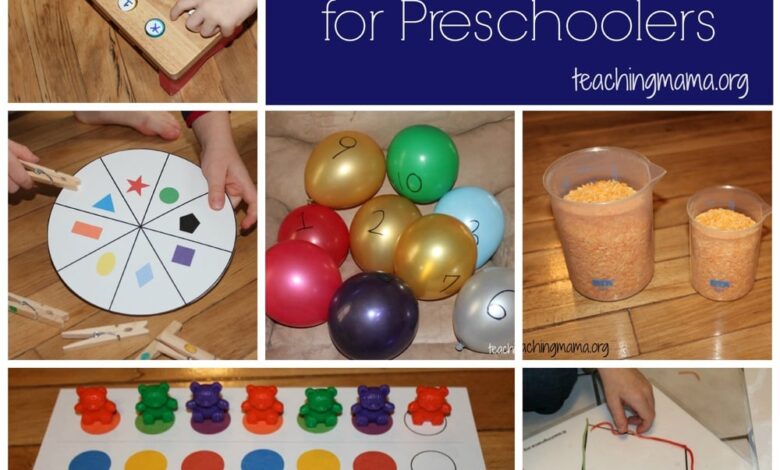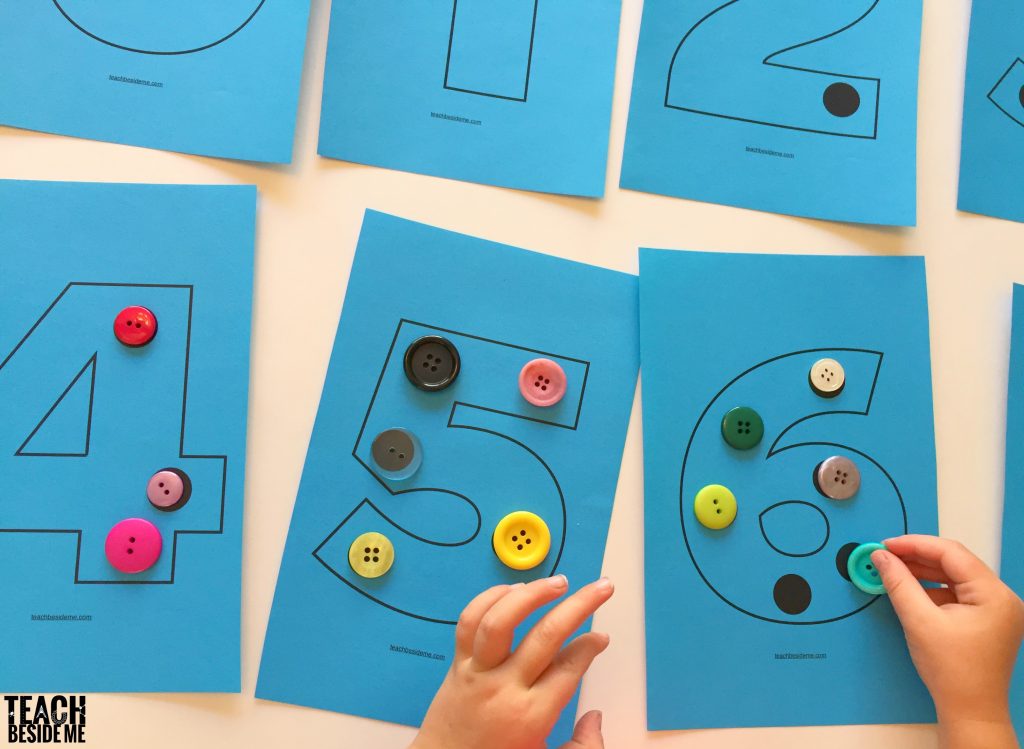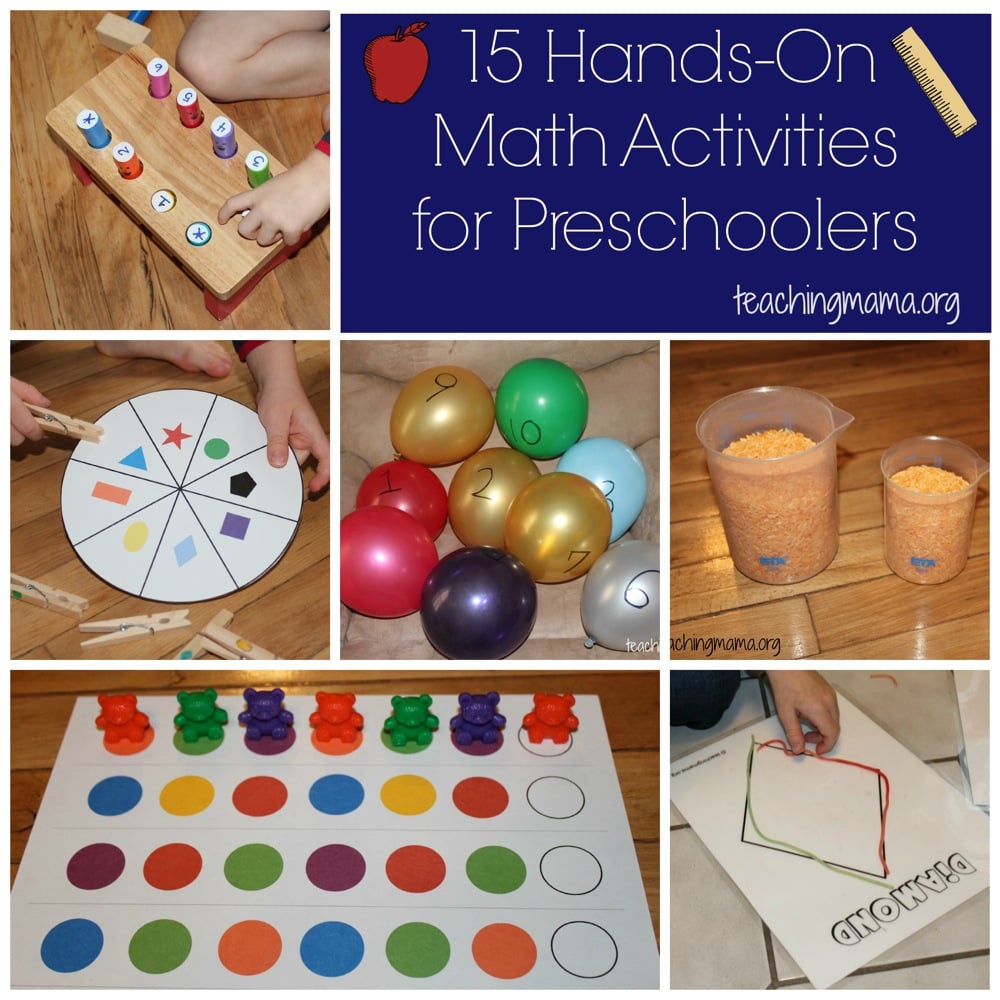
20 Preschool Math Games and Activities to Start Them Off Right
20 Preschool Math Games and Activities to Start Them Off Right – It’s never too early to spark a love for math in young minds! Preschool is a crucial time for laying the foundation for future mathematical understanding, and engaging play-based learning is the key.
From counting and sorting to measurement and problem-solving, this article will guide you through a variety of fun and interactive activities that will make learning math a joyful experience for your little ones.
Imagine a world where numbers come alive, shapes transform into playful characters, and every day offers a new opportunity to explore mathematical concepts. This is the world we’re building with these 20 preschool math games and activities. By incorporating these ideas into your preschooler’s routine, you’ll be fostering a love for math that will last a lifetime.
Number Recognition and Counting

Preschoolers are just beginning to grasp the world of numbers. Number recognition and counting are fundamental skills that lay the foundation for future mathematical understanding. Engaging activities can make learning these concepts fun and stimulating for young minds.
Fun Activities for Number Recognition and Counting
Here are five fun activities to help preschoolers learn number recognition and counting:
- Number Matching Game
This activity helps children develop number recognition and one-to-one correspondence.
| Activity Name | Materials | s | Learning Objective |
|---|---|---|---|
| Number Matching Game | Number cards (1-10), objects (e.g., blocks, toys, buttons) |
|
Recognize numbers and match them to corresponding quantities. |
- Counting with Play Dough
This activity encourages counting and number recognition while fostering creativity.
| Activity Name | Materials | s | Learning Objective |
|---|---|---|---|
| Counting with Play Dough | Play dough, cookie cutters, number stamps (optional) |
|
Count objects and develop fine motor skills. |
- Number Train
This activity helps children learn number sequence and counting in a playful way.
| Activity Name | Materials | s | Learning Objective |
|---|---|---|---|
| Number Train | Toy train cars, number stickers |
|
Recognize and sequence numbers. |
- Number Bingo
This activity is a fun way to reinforce number recognition and counting.
| Activity Name | Materials | s | Learning Objective |
|---|---|---|---|
| Number Bingo | Bingo cards with numbers, number chips or markers |
|
Recognize numbers and develop listening skills. |
- Counting with Blocks
This activity is a hands-on way to practice counting and number recognition.
Getting preschoolers excited about math can be a challenge, but it’s definitely achievable with the right approach. Think about simple activities like sorting toys by color or counting out snacks. These activities, combined with playful games, can lay a strong foundation for their future math skills.
Speaking of strong foundations, I recently read a heartwarming story about a stranger who made a barista’s day by paying for her entire order – you just saved a life kind stranger brings starbucks barista to tears in life changing interaction – which reminded me of the importance of small acts of kindness.
And, just like that act of kindness, introducing preschoolers to math through fun and engaging activities can have a lasting impact on their development.
| Activity Name | Materials | s | Learning Objective |
|---|---|---|---|
| Counting with Blocks | Building blocks, number cards |
|
Count objects and develop fine motor skills. |
Sorting and Classifying
Sorting and classifying are fundamental skills in early math development. They help children understand patterns, relationships, and categories, laying the groundwork for more complex mathematical concepts. These skills also enhance logical thinking, problem-solving abilities, and organizational skills.
Activities for Sorting and Classifying
Sorting and classifying activities can be engaging and fun for preschoolers. Here are five activities that promote these skills:
- Sorting by Color: Provide a variety of objects in different colors, such as blocks, buttons, or toys. Ask children to sort the objects by color.
- Sorting by Shape: Gather objects of different shapes, such as circles, squares, triangles, and rectangles. Have children sort the objects by their shapes.
- Sorting by Size: Collect objects of varying sizes, such as small, medium, and large blocks or toys. Encourage children to sort the objects by size.
- Classifying Animals: Show children pictures of different animals and ask them to group them by categories, such as farm animals, wild animals, or pets.
- Classifying Food: Present children with different food items and ask them to categorize them based on their type, such as fruits, vegetables, or snacks.
| Activity Name | Materials | Instructions | Skill Focus |
|---|---|---|---|
| Sorting by Color | Assorted objects in different colors (blocks, buttons, toys) | Ask children to sort the objects into groups based on their color. | Color recognition, sorting |
| Sorting by Shape | Objects of different shapes (circles, squares, triangles, rectangles) | Have children group the objects according to their shapes. | Shape recognition, sorting |
| Sorting by Size | Objects of varying sizes (blocks, toys) | Encourage children to arrange the objects from smallest to largest or vice versa. | Size comparison, sorting |
| Classifying Animals | Pictures of different animals | Show children the pictures and ask them to categorize the animals based on their habitat or characteristics. | Animal recognition, classification |
| Classifying Food | Different food items | Present the food items and ask children to group them based on their type, such as fruits, vegetables, or snacks. | Food recognition, classification |
Measurement and Geometry

Preschoolers are naturally curious about the world around them, and they are constantly exploring and experimenting. Measurement and geometry are fundamental concepts that can be introduced to preschoolers through playful activities. By engaging in hands-on experiences, they can develop a foundational understanding of these concepts.
Introducing Measurement and Geometry through Play
Measurement and geometry are essential skills for preschoolers. Measurement involves comparing and quantifying objects, while geometry explores shapes and spatial relationships. Through play, preschoolers can learn about these concepts in a fun and engaging way.
Getting preschoolers excited about math can be a fun challenge! From building towers with blocks to sorting toys by color, there are endless ways to introduce them to numbers and shapes. But sometimes, it’s good to step outside the box and consider alternative approaches.
For instance, have you ever wondered if are cryptocurrency and gold similar investments ? While that might seem a bit abstract for preschoolers, it helps us think creatively about how we can make math engaging and relevant to their world.
Ultimately, the key is to make learning fun and exciting, whether it’s counting cookies or exploring the world of numbers through playful activities.
- Direct comparison:Preschoolers can compare the lengths of two objects by placing them side-by-side. For instance, they can compare the lengths of two crayons or two blocks to see which one is longer. This helps them understand the concept of “longer” and “shorter.”
- Indirect comparison:Preschoolers can compare the lengths of two objects indirectly by using a third object as a reference. For example, they can use a string to measure the length of a table and then use the same string to measure the length of a chair.
Just like you need the right tools to engage young minds with 20 preschool math games and activities, you need to adapt your approach to digital marketing in the age of privacy. Understanding the evolving landscape of data protection is crucial, and how to do digital marketing in the age of privacy will help you navigate these changes.
By mastering these new strategies, you can ensure your message resonates with your audience while respecting their privacy, just as you would tailor your approach to preschoolers learning math.
This helps them understand the concept of “equal” and “not equal.”
- Non-standard units:Preschoolers can use everyday objects, such as blocks or paperclips, to measure the length of different items. This helps them understand the concept of “unit” and how it can be used to measure length.
- Spatial relationships:Preschoolers can explore spatial relationships by playing with blocks, puzzles, or other toys. They can build towers, create patterns, or solve puzzles that involve spatial reasoning. This helps them understand concepts like “above,” “below,” “inside,” and “outside.”
- Shape recognition:Preschoolers can learn about different shapes by playing with shape sorters, building blocks, or drawing. They can identify and name common shapes like circles, squares, triangles, and rectangles.
Activities for Exploring Measurement and Geometry, 20 preschool math games and activities to start them off right
Here are five practical examples of activities that incorporate measurement and geometry concepts for preschoolers:
| Activity Name | Materials | Instructions | Concept Focus |
|---|---|---|---|
| Block Building | Various sizes of blocks | Encourage children to build towers, houses, or other structures using blocks. Ask them to compare the heights of their creations or to build structures with specific dimensions. | Measurement (length, height), spatial relationships |
| Playdough Shapes | Playdough, cookie cutters, rolling pin | Provide children with playdough and cookie cutters to create different shapes. Ask them to identify the shapes they create or to roll out playdough to a specific thickness. | Geometry (shapes), measurement (thickness) |
| Shape Hunt | Picture books, magazines, or real-world objects | Take children on a shape hunt in the classroom or outdoors. Ask them to identify different shapes they find in their surroundings. | Geometry (shapes) |
| Measuring with Hands | Objects of different lengths | Have children measure the length of different objects using their hands. They can compare the length of a table to the length of a book by counting how many hand spans it takes to cover each object. | Measurement (length), non-standard units |
| Geometric Patterns | Colored blocks, beads, or other manipulatives | Encourage children to create patterns using different shapes and colors. They can create repeating patterns or explore symmetry. | Geometry (shapes), spatial relationships, patterns |
Problem-Solving and Logic
Problem-solving and logic are fundamental skills in mathematics, and their development begins early in childhood. Preschoolers naturally explore their environment and engage in activities that foster these skills. By introducing them to age-appropriate problem-solving and logic games, we can nurture their critical thinking abilities and set them on a path to success in mathematics.
Problem-Solving and Logic Activities for Preschoolers
These activities are designed to encourage preschoolers to think critically and use their reasoning skills to solve problems.
- Puzzlesare a classic way to engage children in problem-solving. They encourage spatial reasoning, pattern recognition, and the ability to see the whole picture from its parts.
- Sorting and Classifying Activitieshelp children develop logical thinking by organizing objects based on specific criteria. They learn to identify similarities and differences, which are essential for problem-solving.
- Storytelling and Sequencing Activitiesencourage children to think about the order of events and make connections between different parts of a story. They develop their ability to reason about cause and effect.
- Pattern Recognition Gamesinvolve identifying and extending patterns, a crucial skill for understanding mathematical concepts. They help children develop their logical reasoning and problem-solving abilities.
- Building and Construction Activitiesencourage children to think creatively and solve problems using their imagination. They develop their spatial reasoning, problem-solving, and logical thinking skills.
| Activity Name | Materials | Instructions | Skill Focus |
|---|---|---|---|
| Shape Puzzles | Wooden or plastic shape puzzles | Encourage children to fit the puzzle pieces together by matching shapes and sizes. | Spatial reasoning, problem-solving, shape recognition |
| Color Sorting | Assortment of colored blocks, buttons, or toys | Ask children to sort the objects by color. Encourage them to explain their reasoning. | Sorting, classifying, logical thinking |
| Story Sequencing Cards | Set of picture cards depicting a simple story | Have children arrange the cards in the correct order to tell the story. | Sequencing, storytelling, logical reasoning |
| Pattern Blocks | Set of pattern blocks with different shapes and colors | Ask children to create patterns using the blocks, such as repeating colors or shapes. | Pattern recognition, logical thinking, problem-solving |
| Building Blocks | Wooden or plastic building blocks | Encourage children to build towers, structures, or other creations. Ask them to explain their design choices. | Spatial reasoning, problem-solving, creativity, logical thinking |
Closing Notes: 20 Preschool Math Games And Activities To Start Them Off Right
With these 20 preschool math games and activities, you’ll be well on your way to nurturing a love for math in your little ones. Remember, math is everywhere, from the number of blocks in a tower to the shapes in a cookie cutter.
By turning everyday experiences into learning opportunities, you’ll help your preschooler develop a strong foundation for future mathematical success. So, gather your materials, get ready for some fun, and watch your child blossom into a confident math explorer!

